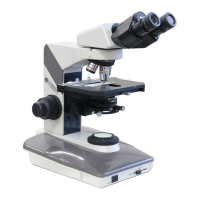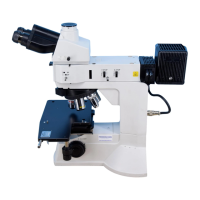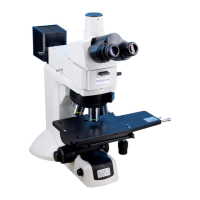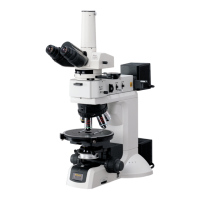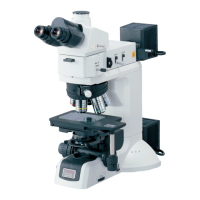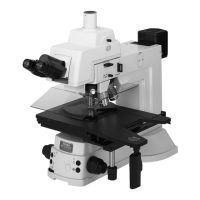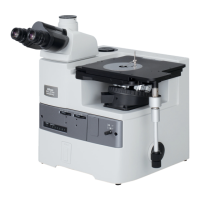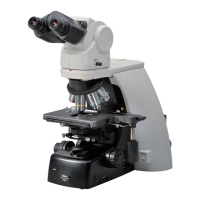III. MICROSCOPY
I 1.~.,Op~rating ~rocedure
1) Turn the brightness control dial (including power
switch) to ON and set the scaleon the dial to 4.
2) Remove the dust cap and place the daylight filter
onto the field lens.
3) Place the specimen on the stage and swing the
10x objective into position. Focus on specimen.
4) Adjust the interpupillary distance and diopter.
(Refer to P. 9)
5) Carry out the centering procedure for the con-
denser. (Refer to P: 10)
6) Swi~g in the objective to be used and ~efocuson
specimen.
7) Adjust the condenser. (Refer to Table 1)
Table 1. Use of Condensers
\ Type of
Abbe
Swing-out Achromat
Achromat/aplanat
condenser
condenser
condenser condenser
\ Object \
NA = 1.25
NA = O,g
NA = 1.35
distance
Dry system
Oil-immersion
Objective\
2mm
1.8mm1,Gmm
lX
Remove the
Remove the condenser
*2X
condenser
Remove the
*4x
Top lens swung out
condenser
lOx
20X
Usable
Top lens swung in
40X
Usable
100x
[NOTE] • The above object distance (from the top of the
condenser lens to the specimen surface) includes a
glass slide thickness 1.2mm.
*.When using the Swing-out condenser with 2X or
4X objective, fully open its aperture diaphragm.
• UW (ultra-wide) viewfield observation is possible
with 2X '" lOOX objective. In combination with
the Abbe condenser, however, the use of the lOX
or higher objective is possible.
• For photomicrography using the 4X or lower ob-
jective, remove the Abbe condenser.
• For photomicrography using the 2X objective,
preferably remove the condenser.
• For observation with the 1x objective, additional-
ly use the diffuser. (available on order).
• The Achromat/aplanat condenser is not included
in the standard set.
8) Brightness is adjusted by changing the lamp
voltage.
9) Adjust the condenser aperture diaphragm and the
field diaphragm. (Refer to P. 10, 11)
8
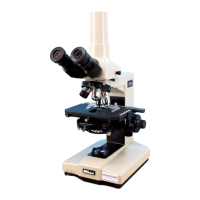
